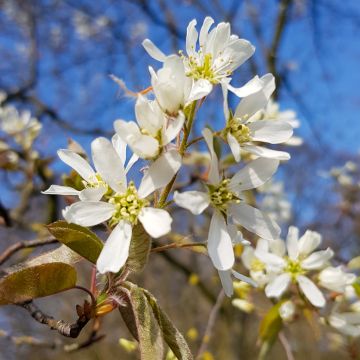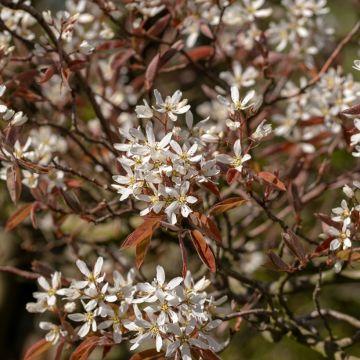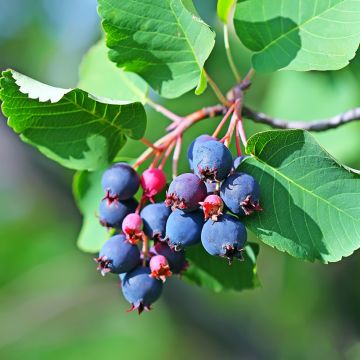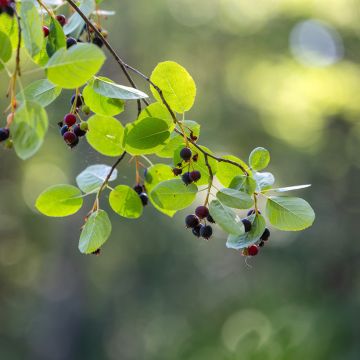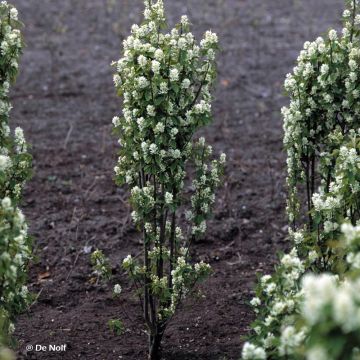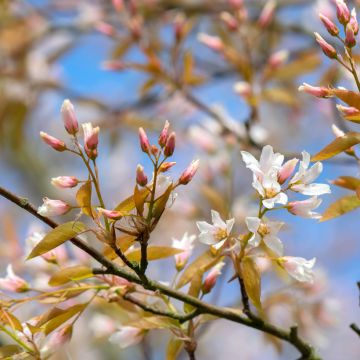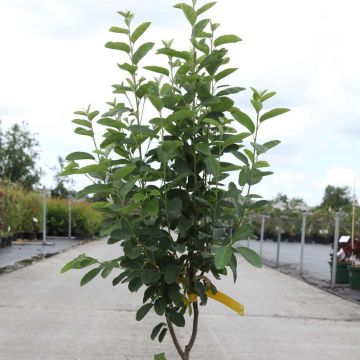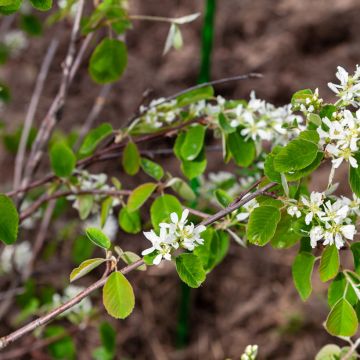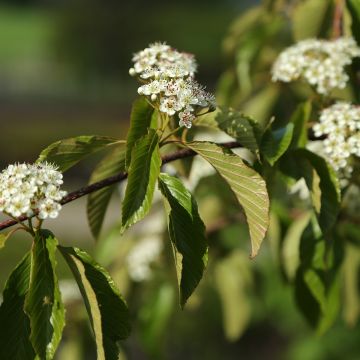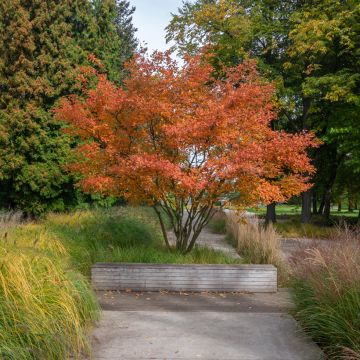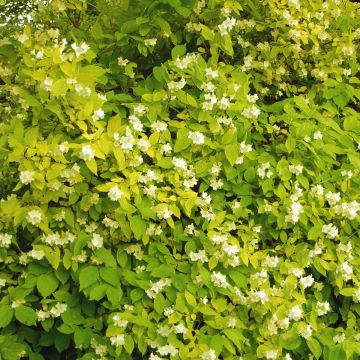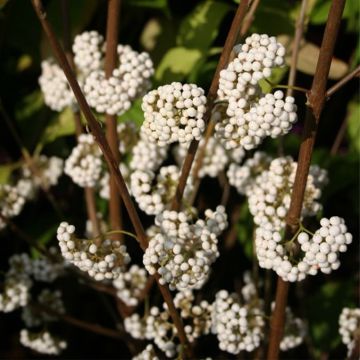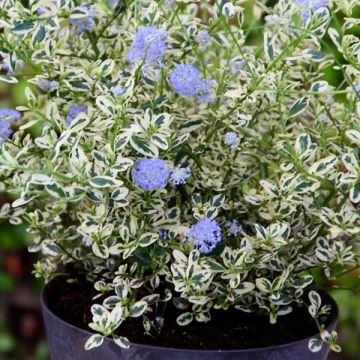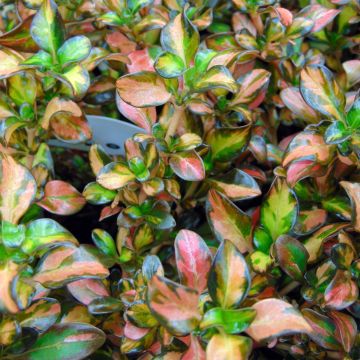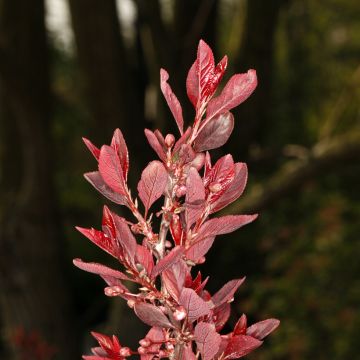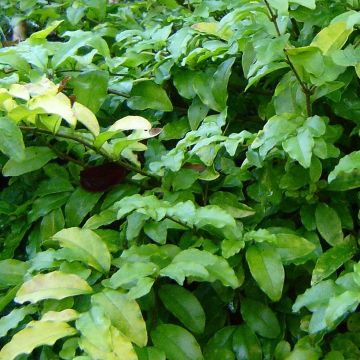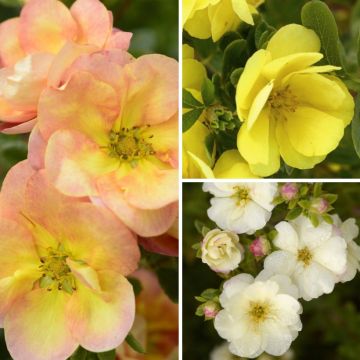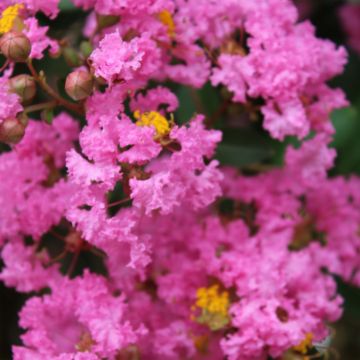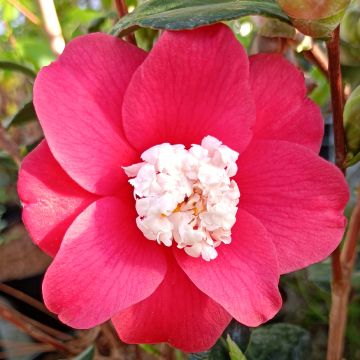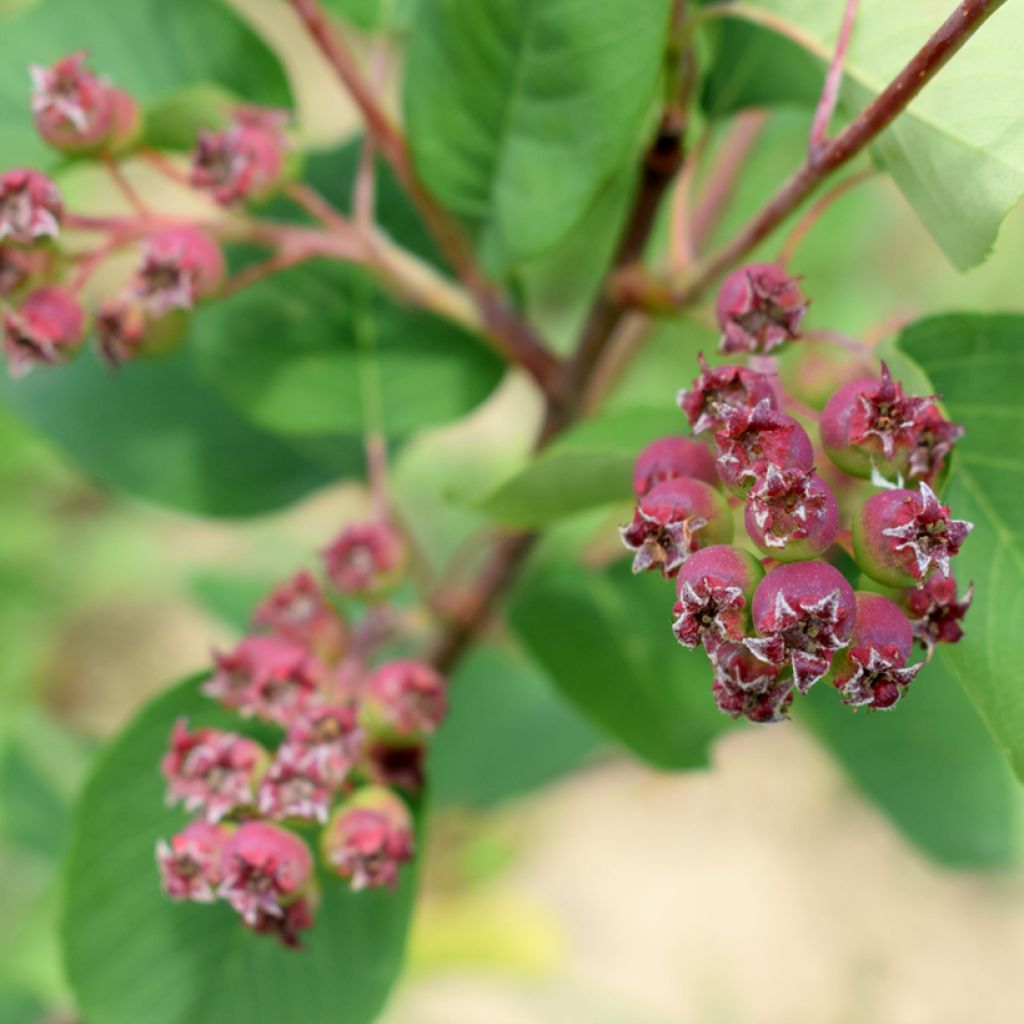

Amelanchier alnifolia Martin
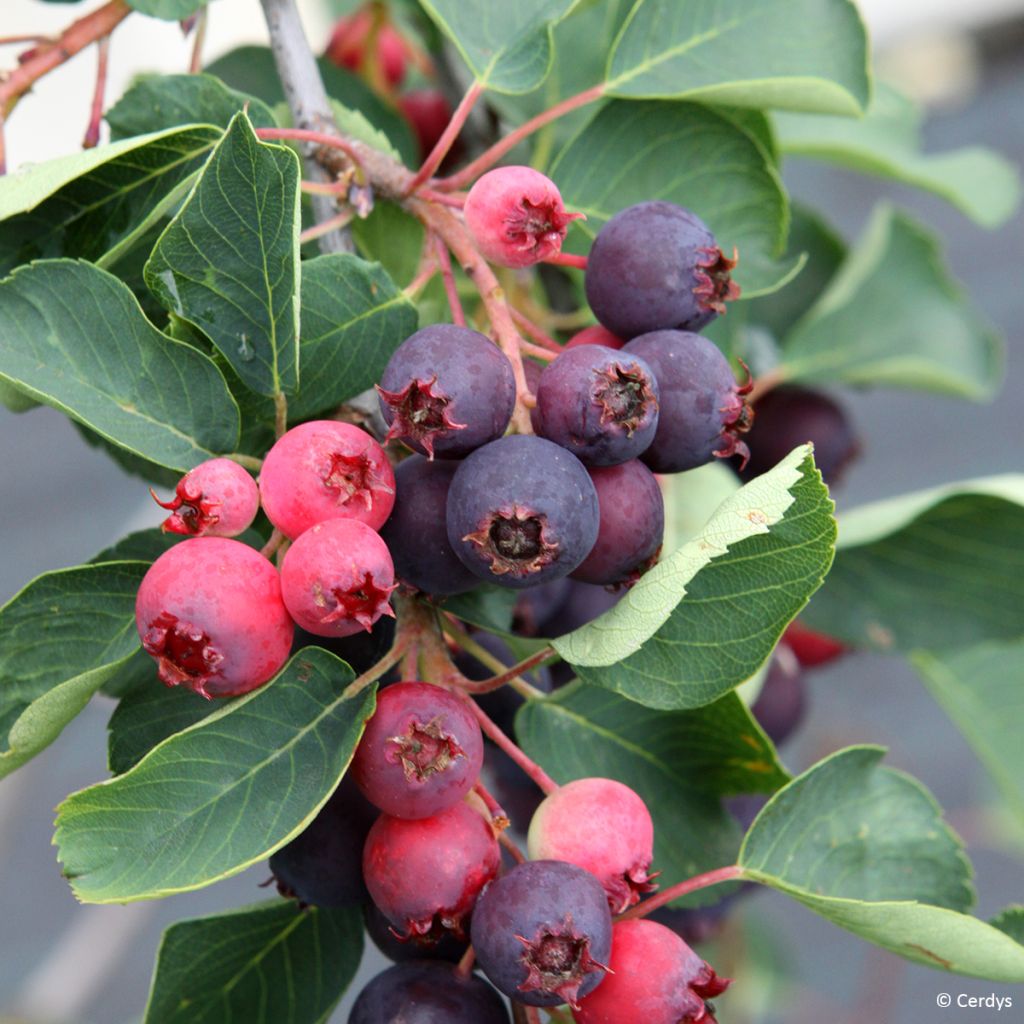

Amelanchier alnifolia Martin
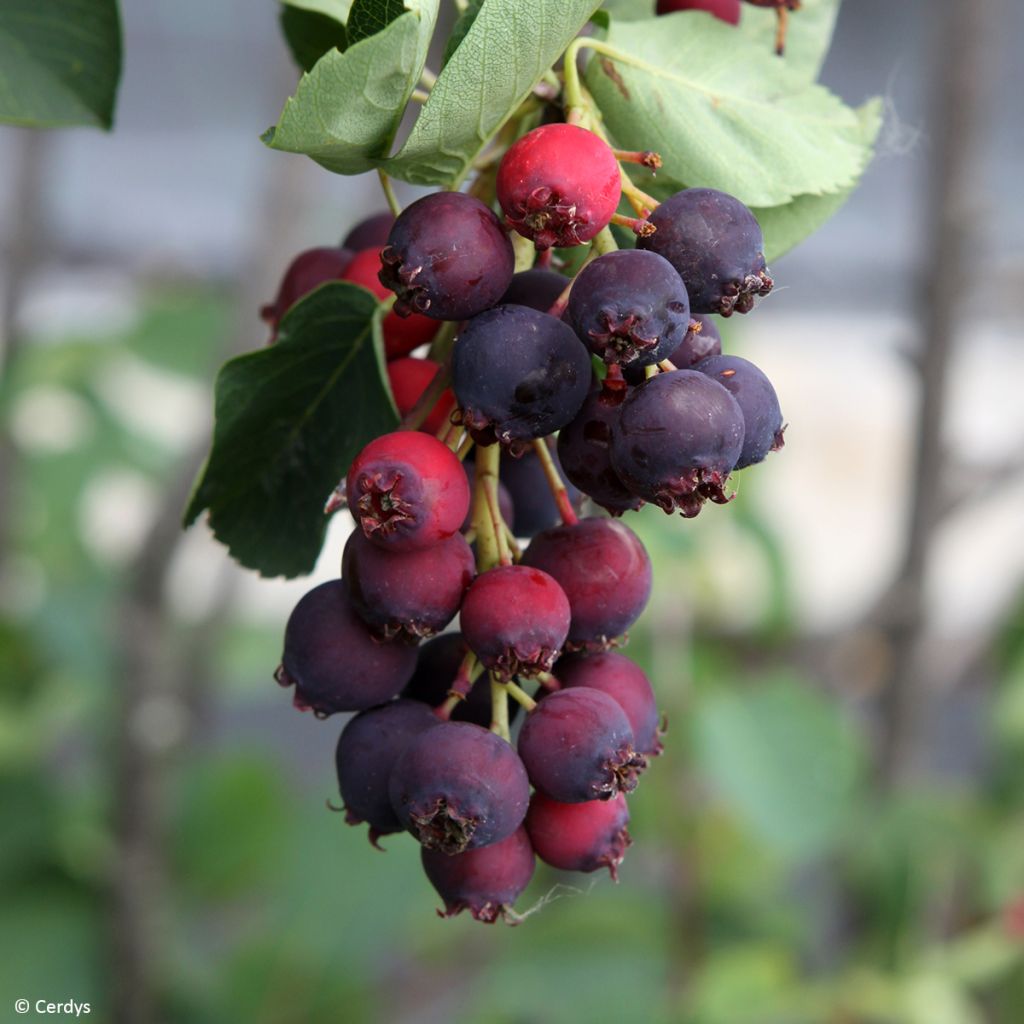

Amelanchier alnifolia Martin
Amelanchier alnifolia Martin
Amelanchier alnifolia
Saskatoon berry, Pacific serviceberry, Western serviceberry, Alder-leaved serviceberry
Why not try an alternative variety in stock?
View all →This plant carries a 6 months recovery warranty
More information
We guarantee the quality of our plants for a full growing cycle, and will replace at our expense any plant that fails to recover under normal climatic and planting conditions.
From €5.90 for pickup delivery and €6.90 for home delivery
Express home delivery from €8.90.
Description
Amelanchier alnifolia 'Martin' is the earliest variety of Amelanchier with alder-like leaves and offers the largest fruits. They have a particularly sweet flavour, devoid of the typical "green" taste of these berries. However, they are still aromatic, with flavours of ripe cherries and almonds. They are ready to be harvested from early to mid-June, 7 to 8 weeks after the beautiful white flowering. The bush forms a compact habit, suitable for cultivation in pots as well as in fruit hedges or as a free-standing plant. It tolerates very chalky soils.
Native to North America, from Alaska to Maine, the Amelanchier with alder-like leaves is a sturdy bush from the large Rosaceae family, spared by most parasites and resistant to extreme cold. In nature, it is found along watercourses as well as in much less favourable environments, such as rocky slopes exposed to the wind. It prefers slightly acidic and moist soil, but it is adaptable and capable of adapting to relatively dry and hot summers once established. To obtain a good harvest, it will be necessary to provide it with fairly fertile soil and water if necessary.
'Martin' has a rather slow growth, a bit scattered as a young bush, but this attenuates over the years, reaching 2m in height and 1.5m in width. Its bark is grey to brown, sometimes tinged with red. Smooth when young, it becomes rougher over time. The flowering is abundant in April-May, at the end of the young naked branches or already covered with very young leaves, depending on the climate. The flowering and fruiting is quite rapid in this Amelanchier, from the third or fourth year. The 2cm white flowers with 5 petals and yellow stamens are gathered in clusters along the branches. They are followed by round, edible fruits that resemble blueberries, called pomes. They are red and blue and almost black when ripe, between early June and mid-June. They can be consumed fresh or cooked, as jam or jelly. They have great nutritional value, recent analyses confirm their high content of antioxidant molecules, vitamins, and minerals. The fruits have a limited shelf life. They can be consumed fresh, or frozen, dried, or preserved for later use. A single plant is sufficient to obtain a harvest ranging from 3kg to 7-8kg of fruit depending on the soil fertility, but it is often recommended to plant two plants to optimise fruit formation.
The young spring leaves are hairy and then become tougher. They have a pretty green-blue colour and turn yellow in autumn before falling. Measuring up to 5cm in length, they are entire, oval-shaped, with toothed edges, and are arranged alternately on the branches.
The 'Martin' Amelanchier is a sturdy, charming and undemanding fruit bush which deserves a place in a country, informal or fruit hedge and can also be grown in pots. It is also used as a background for perennial or lower shrub borders. It pairs well with ornamental apple and cherry trees, deciduous euonymus, Japanese quince, spring spireas, hawthorns, medlars, prunus, and many others. Create a fruit hedge by associating it, for example, with the May berry (Lonicera kamtschatica Sweet Myberry), garden blackberries, currants, gooseberries, cranberries (Vaccinium macrocarpon), blueberries, raspberries, Aronia, Japanese goumi, and black elderberry.
The common name 'Saskatoon', an Anglicisation of a word belonging to the Cree language, can be translated as "the fruit of the tree with many branches". This fruit gave its name to the Canadian city of Saskatoon.
Report an error about the product description
Plant habit
Fruit
Flowering
Foliage
Botanical data
Amelanchier
alnifolia
Rosaceae
Saskatoon berry, Pacific serviceberry, Western serviceberry, Alder-leaved serviceberry
Cultivar or hybrid
Other Saskatoon - Juneberry
Planting and care
Amelanchier alnifolia Martin should be planted in spring or autumn in any good, well-drained garden soil, preferably slightly moist and deep, in a sunny or semi-shaded position. It prefers slightly acidic to neutral soils but can tolerate some limestone. This bush, which does not like overly dry conditions, can however withstand moderate summer drought once well established. Water regularly to help it establish, especially during the first two dry summers. Mulch the soil to maintain some moisture, always after watering your amelanchier abundantly so that its roots do not develop only at the surface of the soil, which would make it more susceptible to water shortage.
Every spring, apply well-decomposed compost at the base of your bush to support fruit production.
You can prune the bush from the first year to encourage branching. Beware of powdery mildew! Spray a fungicidal compound based on sulfur as a preventive measure if the spring is mild and very humid. Like all bushes in the rose family, the amelanchier can be susceptible to fire blight.
Planting period
Intended location
Care
This item has not been reviewed yet - be the first to leave a review about it.
Hedge shrubs
Haven't found what you were looking for?
Hardiness is the lowest winter temperature a plant can endure without suffering serious damage or even dying. However, hardiness is affected by location (a sheltered area, such as a patio), protection (winter cover) and soil type (hardiness is improved by well-drained soil).

Photo Sharing Terms & Conditions
In order to encourage gardeners to interact and share their experiences, Promesse de fleurs offers various media enabling content to be uploaded onto its Site - in particular via the ‘Photo sharing’ module.
The User agrees to refrain from:
- Posting any content that is illegal, prejudicial, insulting, racist, inciteful to hatred, revisionist, contrary to public decency, that infringes on privacy or on the privacy rights of third parties, in particular the publicity rights of persons and goods, intellectual property rights, or the right to privacy.
- Submitting content on behalf of a third party;
- Impersonate the identity of a third party and/or publish any personal information about a third party;
In general, the User undertakes to refrain from any unethical behaviour.
All Content (in particular text, comments, files, images, photos, videos, creative works, etc.), which may be subject to property or intellectual property rights, image or other private rights, shall remain the property of the User, subject to the limited rights granted by the terms of the licence granted by Promesse de fleurs as stated below. Users are at liberty to publish or not to publish such Content on the Site, notably via the ‘Photo Sharing’ facility, and accept that this Content shall be made public and freely accessible, notably on the Internet.
Users further acknowledge, undertake to have ,and guarantee that they hold all necessary rights and permissions to publish such material on the Site, in particular with regard to the legislation in force pertaining to any privacy, property, intellectual property, image, or contractual rights, or rights of any other nature. By publishing such Content on the Site, Users acknowledge accepting full liability as publishers of the Content within the meaning of the law, and grant Promesse de fleurs, free of charge, an inclusive, worldwide licence for the said Content for the entire duration of its publication, including all reproduction, representation, up/downloading, displaying, performing, transmission, and storage rights.
Users also grant permission for their name to be linked to the Content and accept that this link may not always be made available.
By engaging in posting material, Users consent to their Content becoming automatically accessible on the Internet, in particular on other sites and/or blogs and/or web pages of the Promesse de fleurs site, including in particular social pages and the Promesse de fleurs catalogue.
Users may secure the removal of entrusted content free of charge by issuing a simple request via our contact form.
The flowering period indicated on our website applies to countries and regions located in USDA zone 8 (France, the United Kingdom, Ireland, the Netherlands, etc.)
It will vary according to where you live:
- In zones 9 to 10 (Italy, Spain, Greece, etc.), flowering will occur about 2 to 4 weeks earlier.
- In zones 6 to 7 (Germany, Poland, Slovenia, and lower mountainous regions), flowering will be delayed by 2 to 3 weeks.
- In zone 5 (Central Europe, Scandinavia), blooming will be delayed by 3 to 5 weeks.
In temperate climates, pruning of spring-flowering shrubs (forsythia, spireas, etc.) should be done just after flowering.
Pruning of summer-flowering shrubs (Indian Lilac, Perovskia, etc.) can be done in winter or spring.
In cold regions as well as with frost-sensitive plants, avoid pruning too early when severe frosts may still occur.
The planting period indicated on our website applies to countries and regions located in USDA zone 8 (France, United Kingdom, Ireland, Netherlands).
It will vary according to where you live:
- In Mediterranean zones (Marseille, Madrid, Milan, etc.), autumn and winter are the best planting periods.
- In continental zones (Strasbourg, Munich, Vienna, etc.), delay planting by 2 to 3 weeks in spring and bring it forward by 2 to 4 weeks in autumn.
- In mountainous regions (the Alps, Pyrenees, Carpathians, etc.), it is best to plant in late spring (May-June) or late summer (August-September).
The harvesting period indicated on our website applies to countries and regions in USDA zone 8 (France, England, Ireland, the Netherlands).
In colder areas (Scandinavia, Poland, Austria...) fruit and vegetable harvests are likely to be delayed by 3-4 weeks.
In warmer areas (Italy, Spain, Greece, etc.), harvesting will probably take place earlier, depending on weather conditions.
The sowing periods indicated on our website apply to countries and regions within USDA Zone 8 (France, UK, Ireland, Netherlands).
In colder areas (Scandinavia, Poland, Austria...), delay any outdoor sowing by 3-4 weeks, or sow under glass.
In warmer climes (Italy, Spain, Greece, etc.), bring outdoor sowing forward by a few weeks.

































